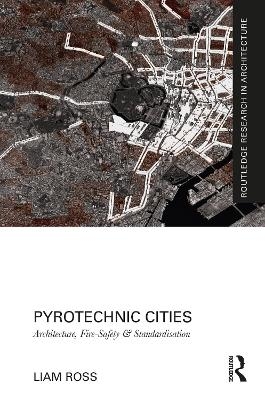
Pyrotechnic Cities
Routledge (Verlag)
978-1-032-21474-0 (ISBN)
- Titel z.Zt. nicht lieferbar
- Versandkostenfrei innerhalb Deutschlands
- Auch auf Rechnung
- Verfügbarkeit in der Filiale vor Ort prüfen
- Artikel merken
Opening with an investigation into the Grenfell Tower fire and the political actors who sought to enrol it in programmes of governmental reform before contextualising the research in current literature, the book takes four city studies, each beginning with a specific historic fire: The 1654 Great Fire of Meirecki, Edo; the 1877 town fire of Lagos; the 1911 Empire Palace Theatre fire, Edinburgh; and the 2001 World Trade Centre attack, New York. Each study identifies the governmental response to the fire, safety standards and codes designed in its wake and how these new processes spread and change.
Drawing on the work of sociologists John Law and Anne Marie Mol and their concept of ‘Fire Space’, it describes the way that architectural design, through the medium of fire, is an instrument of political agency. Pyrotechnic Cities is a critical investigation into these political implications, written for academics, researchers and students in architectural history and theory, infrastructure studies and governance.
Liam Ross is an architect and senior lecturer in Architectural Design at the University of Edinburgh. He studied at the University of Edinburgh and the Architectural Association, and completed his doctoral dissertation under the supervision of Prof. Mark Dorrian. Through his research he responds ‘to a call to study boring things’, paying attention to taken-for-granted aspects of design practice that nonetheless have pervasive effects. Over the past six years his work has focussed on fire-safety standards; he has sought to foreground the contingencies that underpin these universalising codes, and to illustrate their often surprising side-effects. That work has been published in Arch +, arq, Architectural Theory Review, Candide, Gta Papers and Volume, was exhibited at the British Pavilion at the 13th Venice Architecture Biennale, and features in the edited collections Industries of Architecture and Neoliberalism on the Ground. At present he is working on a study of fire metaphors, considering them part of the conceptual infrastructure of architectural theory.
1. Introduction: Gathering around fire, 2. Context: Studying standardisation, 3. Edinburgh: The shape of the British National Anthem, 4. Lagos: The flight of a muzzle spark, 5. Tokyo: Spectres of Edo castle, 6. London: Engineering uncertainty, 7. Grenfell: Trial by fire, 8. Conclusion: Fire-space, Index
| Erscheinungsdatum | 15.06.2022 |
|---|---|
| Reihe/Serie | Routledge Research in Architecture |
| Zusatzinfo | 17 Line drawings, black and white; 32 Halftones, black and white; 49 Illustrations, black and white |
| Verlagsort | London |
| Sprache | englisch |
| Maße | 156 x 234 mm |
| Gewicht | 60 g |
| Themenwelt | Naturwissenschaften ► Biologie ► Ökologie / Naturschutz |
| Technik ► Architektur | |
| ISBN-10 | 1-032-21474-0 / 1032214740 |
| ISBN-13 | 978-1-032-21474-0 / 9781032214740 |
| Zustand | Neuware |
| Haben Sie eine Frage zum Produkt? |
aus dem Bereich


